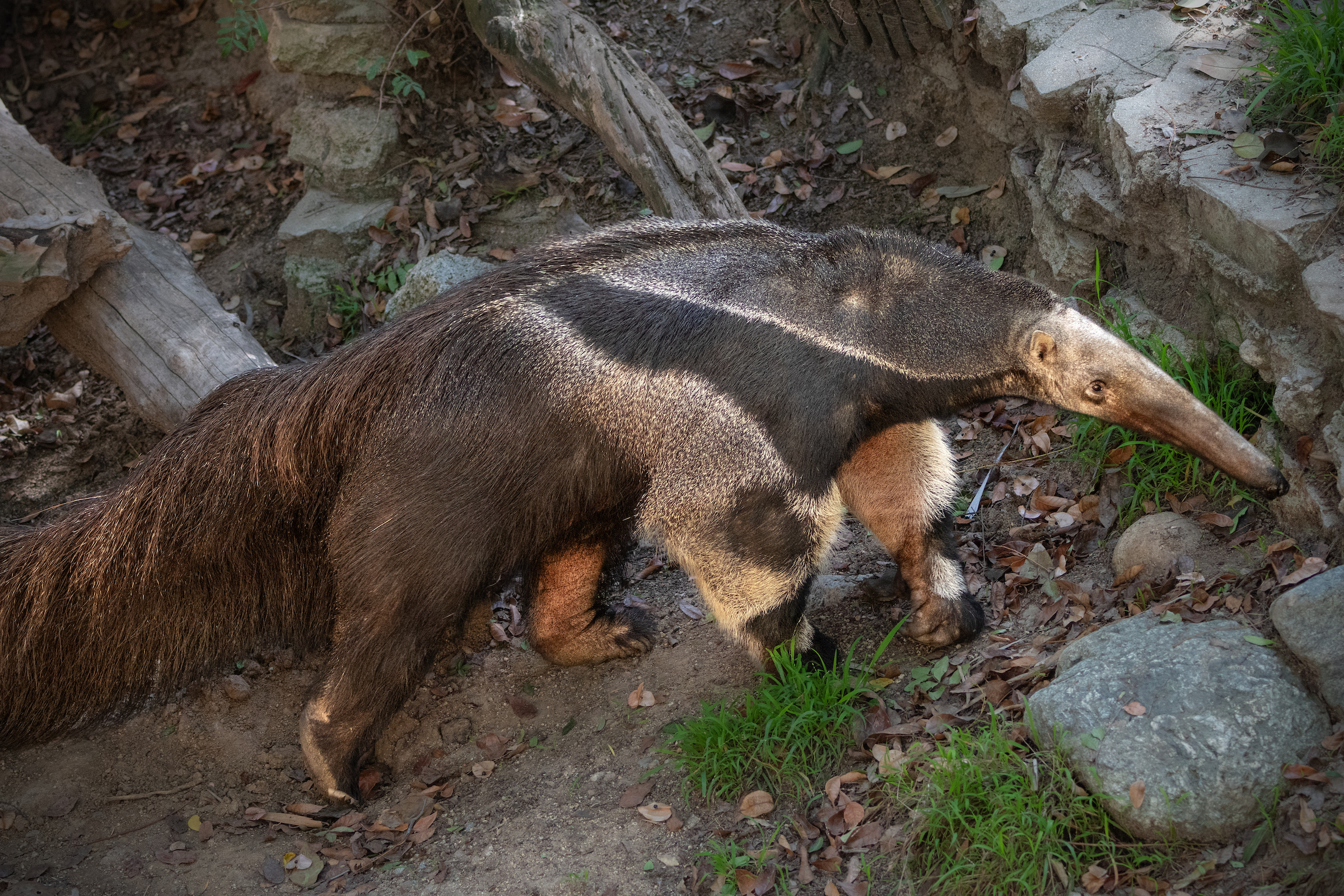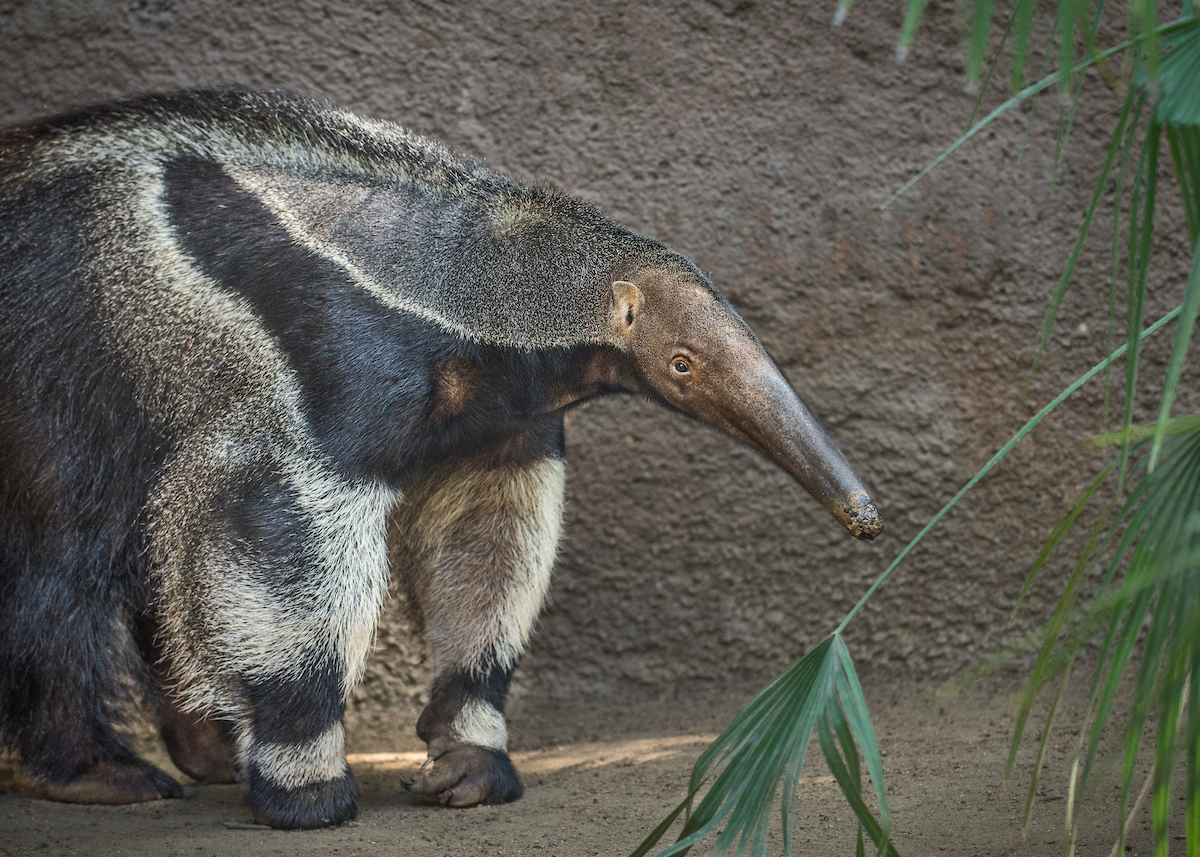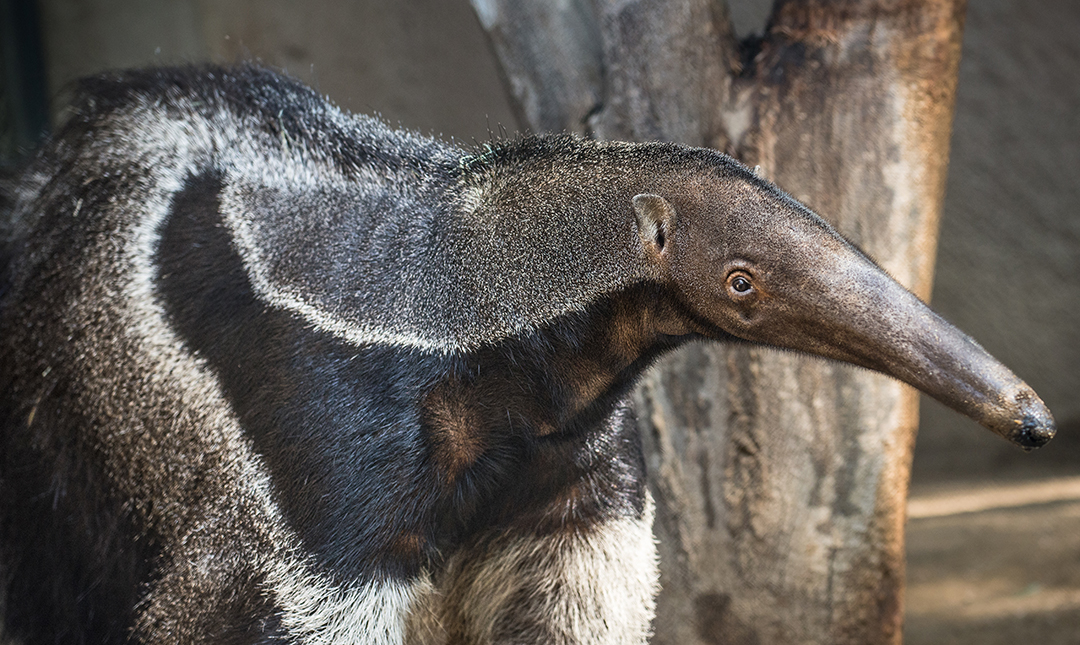About
This largest of the anteater species is found in Central and South America along with its smaller cousin, the tamandua, and its distant relative, the sloth. Giant anteaters visit up to 200 ant nests per day, consuming only about 100 ants per nest and moving on before the insects can mount an attack. In this way, they can consume up to 30,000 ants per day. Sampling a small number of ants per nest allows them to conserve food sources for future visits.
Anteaters walk on their knuckles in order to protect their sickle-shaped claws and keep them sharp. Up to four inches long, they help anteaters dig for food in hard soil or rotting wood. Anteaters typically forage at night using their keen sense of smell to locate ants. If threatened, they will rear up on their hind legs and strike out with their claws. Their thick, long fur provides warmth and camouflage, but also provides some protection from biting ants. Ants are a plentiful food source, but they are low in nutrition. So, the giant anteaters have a low metabolism rate and a lower body temperature than most mammals, about 90°F. They spend up to 15 hours a day resting and sleeping.
Giant anteater populations have declined by about 30 percent during the past decade due to habitat loss, hunting, roadkill, and wildfires.
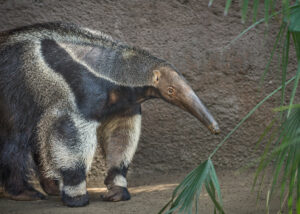
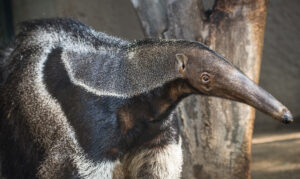
Status
The giant anteater is believed to be extinct in Belize, Uruguay, El Salvador, and parts of Guatemala. The decline of the species is largely due to deforestation and loss of habitat in their grassland homes from wildfire. Giant anteaters are also sometimes hunted for meat and leather in some regions.
Habitat
Grasslands and forests in Central and South America from Guatemala to northern Argentina.
Diet
Insectivores, they feed on large colonial ants and their larvae. Occasionally they will eat beetle larvae or soft, juicy fruits.
Physical Characteristics
Anteaters do not have teeth. Their long tongues can extend up to two feet, flicking in and out about 150 times per minute. Their tongues are sticky and covered with thousands of tiny hooks to hold onto the ants. Giant anteaters tend to avoid eating termites, leaf-cutter ants, and army ants, all of which are large-jawed and aggressive. Instead, they target carpenter ants, which are less ferocious. Giant anteaters are three feet tall with a four-foot-long body and 2-to-3-foot bushy tail. They weigh between 50 and 90 pounds. Males are slightly larger. Lifespan is 30 years or more.
LOCATION WITHIN THE ZOO
You’ll find this animal in the South America section. See Zoo Map.

